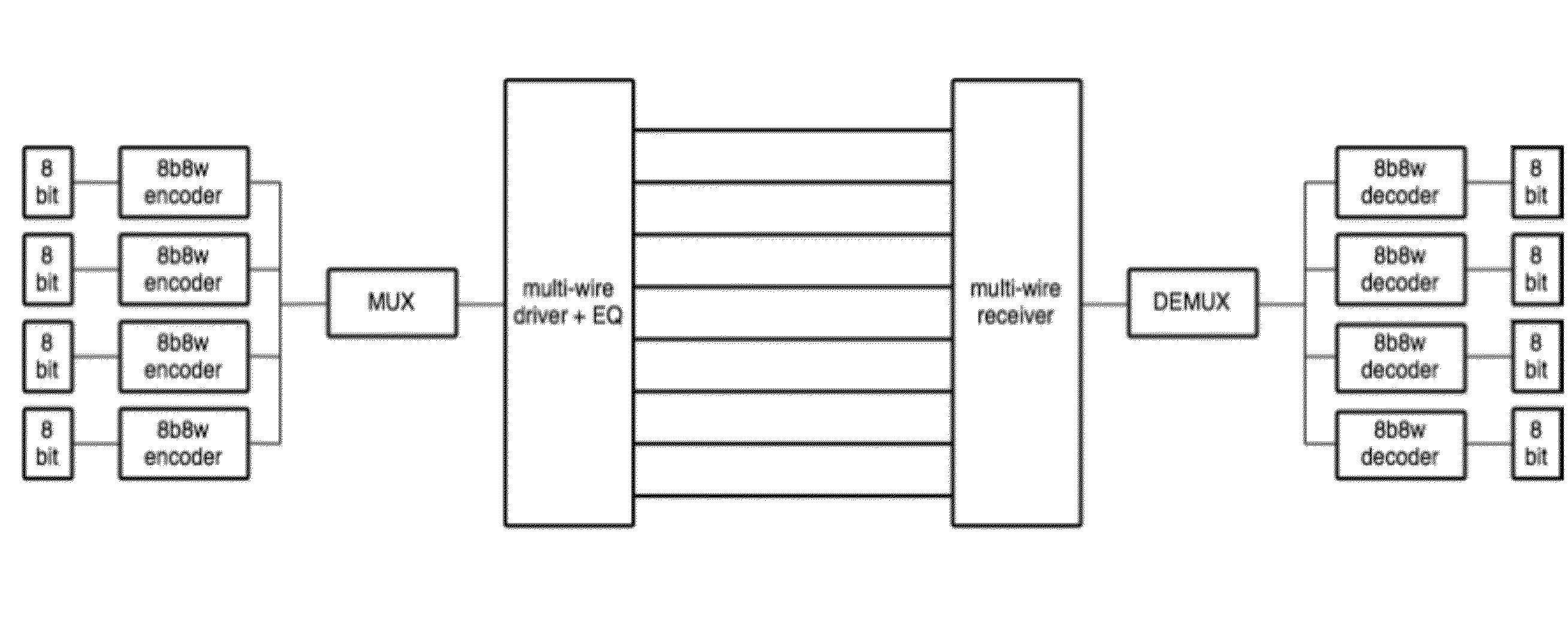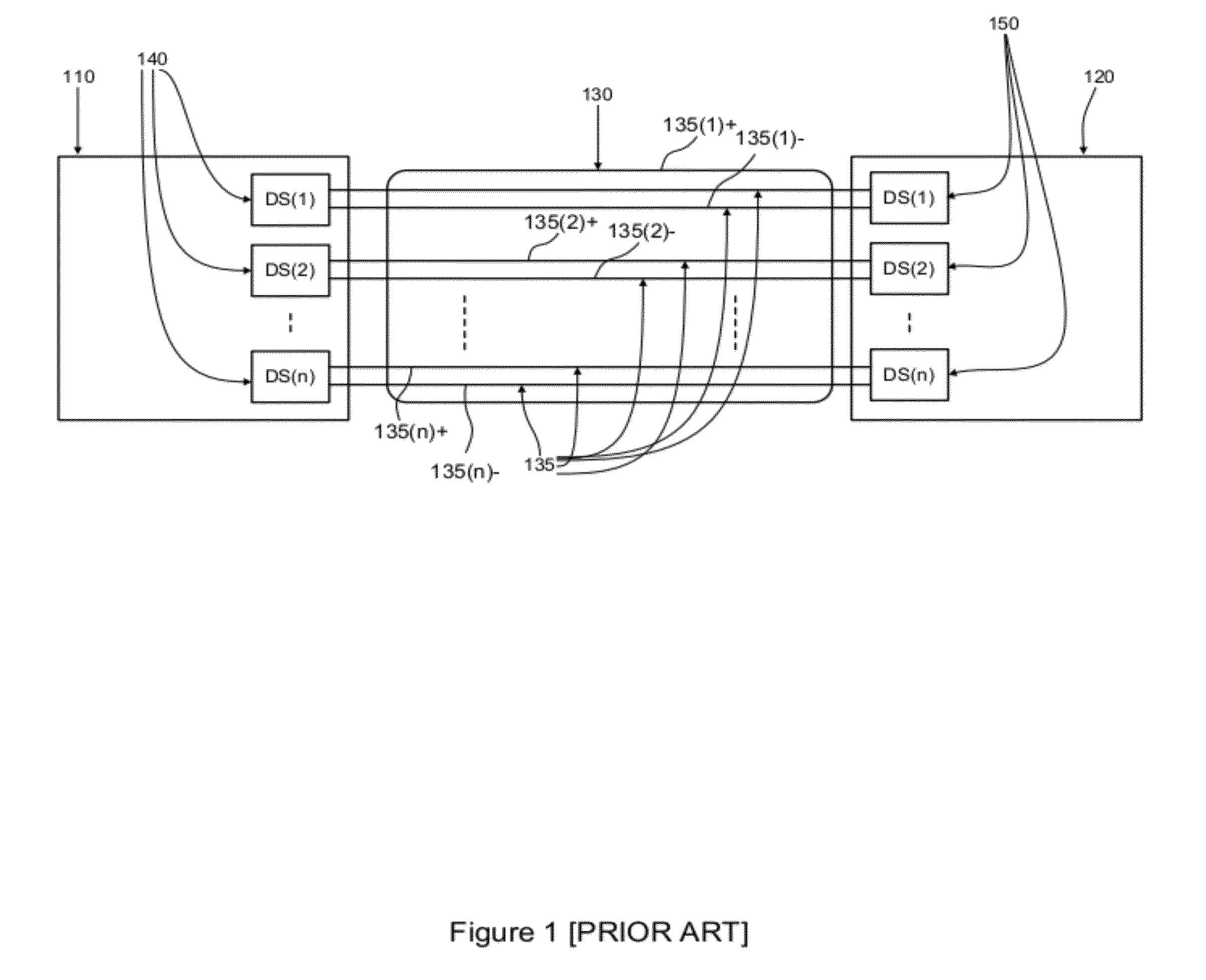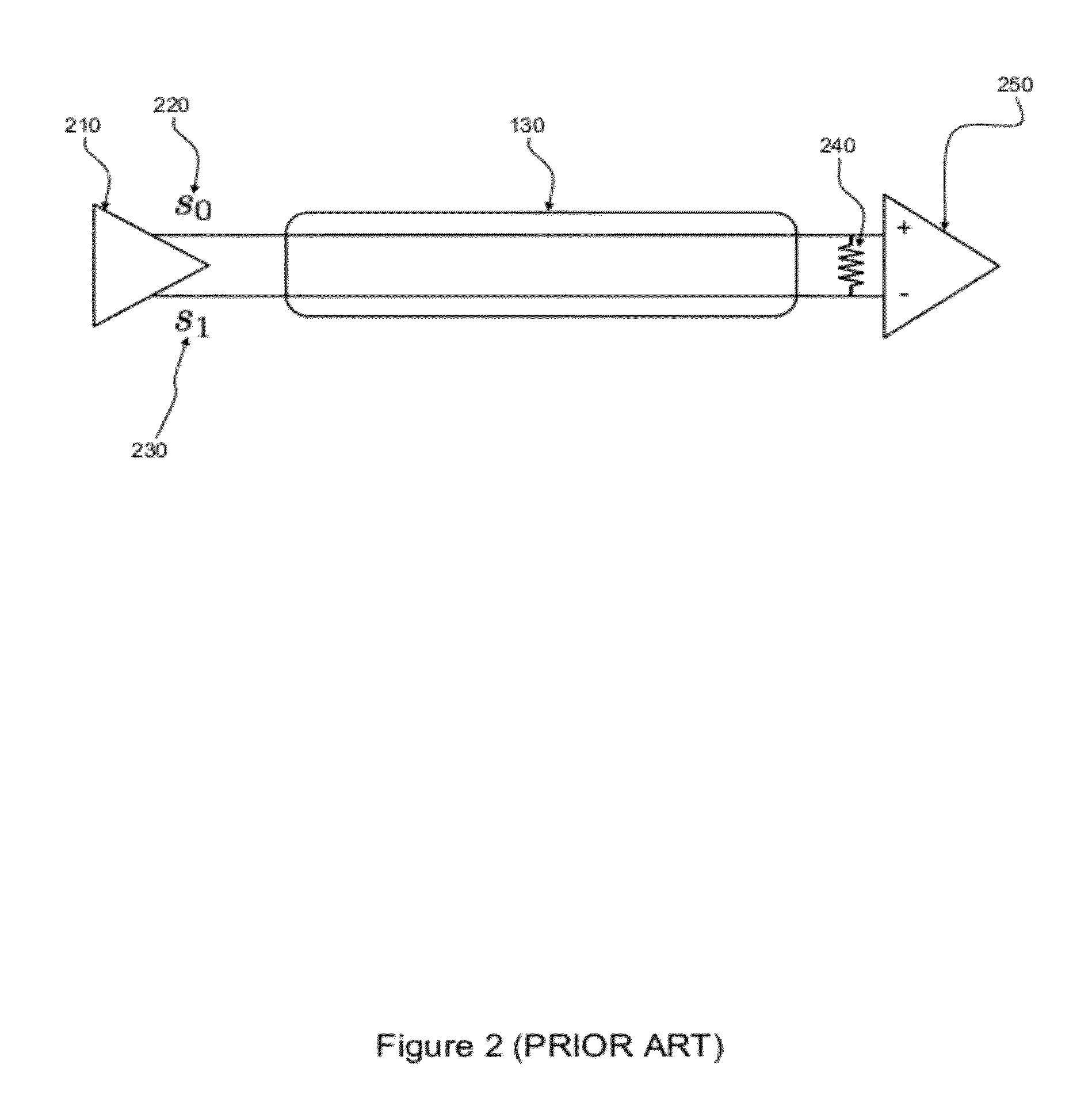Methods and systems for noise resilient, pin-efficient and low power communications with sparse signaling codes
a signaling code and low power technology, applied in the field of communication, can solve the problems of large memory impact on battery life, inability to design high-speed, low-power and pin-efficient chip-to-chip communication systems, and inability to meet the requirements of communication channels, etc., and achieve the effect of reducing the amount of energy needed
- Summary
- Abstract
- Description
- Claims
- Application Information
AI Technical Summary
Benefits of technology
Problems solved by technology
Method used
Image
Examples
Embodiment Construction
[0070]FIG. 3 is a high-level block diagram of a bus communication system over which the present invention might be used, or conventional transmitters / receivers might be used. With such a system, there are multiple wires of the bus and signals are sent over those multiple wires, typically at a periodic rate. Thus, an information source 310 might provide a sequence of k information symbols per period, where the period might be measured as a time interval of 1 / T seconds. In preferred embodiments, T is greater than one and where T is an integer, the bus can convey the information content of kT symbols per second. Without loss of generality, we can assume that these information symbols are bits.
[0071]These bits are to be transmitted on the communication bus 130 to a destination 350. The communication bus 130 comprises n physical wires 135. An example of such a communication bus 130 is for example a bus between a processor and memory. In this case the physical wires may take the form of s...
PUM
 Login to View More
Login to View More Abstract
Description
Claims
Application Information
 Login to View More
Login to View More - R&D
- Intellectual Property
- Life Sciences
- Materials
- Tech Scout
- Unparalleled Data Quality
- Higher Quality Content
- 60% Fewer Hallucinations
Browse by: Latest US Patents, China's latest patents, Technical Efficacy Thesaurus, Application Domain, Technology Topic, Popular Technical Reports.
© 2025 PatSnap. All rights reserved.Legal|Privacy policy|Modern Slavery Act Transparency Statement|Sitemap|About US| Contact US: help@patsnap.com



